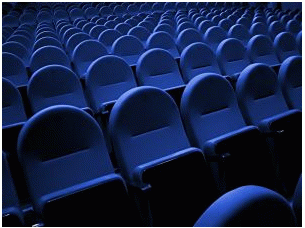This year the Hispanic population became the largest ethnic group in California. The US has steadily been going through a relatively rapid period of 'Latinisation', everything from Food, clothing, news and politics are being influenced by the US's Hispanic population and culture. Yet the entertainment industry has fallen short in addressing this dynamic social shift, possibly to its own detriment, at a time of great flux and uncertainty.
A study by the USC Annenberg School for Communication and Journalism found that Hispanics represent less than 5% of speaking roles on-screen, and with more and more US Hispanics itching for content that is relevant to their experiences, the entertainment industry is failing to service this all-important and growing domestic market. Not only that, but they are managing to do it against all the odds.
Hispanics have a considerable online presence. As a general rule of thumb they utilize social media to a greater extent than non-Hispanics. Pew Research put the number of Hispanic adults using social media at 80% vs. 72% overall for the country. In addition, Hispanics spend more time online, so it follows that as a group they are twice as likely to click on and share content. This considerable and continued growth of an online Hispanic presence can be accredited to the fact that social media lends itself to the word-of-mouth approach that defines Hispanic consumerism.
For an industry like film, which is going through a digital renaissance of its own, Hispanics are a key focus for the online marketing of goods and services. Studios and media outlets are not completely blind to this extraordinarily active market, and there have been many bespoke online initiatives, such as Fandango Cine, an online ticketing service playing host to content pertaining to new film releases aimed specifically at Spanish speakers.
These kinds of platforms aid in the continued success of traditionally well performing products such as animation blockbusters, which are known to attract Hispanic audiences specifically because of their family appeal.
Despite these efforts in targeted promotion and the fact that Hispanic moviegoers make up 25% of ticket sales at the box-office, there is still something missing in the approach to capitalise on this growing market. The big white pinata in the room is that the product being pushed out there is conspicuously lacking in the Hispanic talent area. This is very strange indeed, as we can see from reports as far back as 2011 that there would be an audience for something meaningful in the dramatic Hispanic realm. Back then "The Maximo Report" revealed that 50% of "New Generation Latinos" want to see "their lives, entertainment interests and issues authentically represented". Yet no serious attempt has been made by the film industry to engage this demographic outside of the catchall strategies already working for it. What is fascinating is that this is a demographic that repeatedly oversamples in movie-going versus their population proportionally, and yet Hollywood is doing very little to court the Hispanic footfall with consequential content.
The continued reluctance to engage on any meaningful level with Hispanics has not gone unnoticed. One area the entertainment industry seems to be doing very well in is in garnering criticisms from the media on their portrayal, or lack thereof of Hispanics on and off screen.
Hispanic actors complain that on the other hand the substantive roles offered are parts playing the struggling illegal immigrant or maid. This does nothing to improve upon the stereotype of yester-year and besides which doesn't these days perform particularly well at the box office, which begs the question why we're still seeing these caricatures developed at all. Even when doing the rounds in the development of our own film THE ART OF LIVING, a film with a lead Hispanic protagonist who is not a) illegal, b) an immigrant, or c) dancing and / or partially clothed, we were repeatedly told by studio executives that our true-story drama would be too "complex" for Hispanic audiences.
So what's next for an audience that is telling the entertainment industry that they no longer want patronizing storylines and stock characters? There is a possibility here that the 'disconnect' between the consumer and producer lies in the nature of the corporate complex. Studios are like giant super tankers that require 6 miles to come to a complete halt and change is slow for corporations that can only evolve by committee. Navigating long-established hierarchies and political nuance is a task in itself that must be successfully executed before any change can even be debated. To expect these entities to react in a significant and timely way outside the parameters of established corporate strategy is unrealistic. Evolving past stereotypes so embedded in US popular culture could mean sticking it out for the mile or so it takes for these super tankers to change course.
Independent film on the other hand has a great tradition of unearthing the new and embracing the unexplored. There is a reason why the late 90's sparked a shopping spree by conglomerate media corporations for independent film studios. With their 'turn on a dime' ability to tackle provocative subject matter and bravely employing emerging talent to do it, they were the frivolous proxy sent out to engage a market that was looking for something to challenge the studio conventions. From the movement that brought you Matt Damon, Jennifer Lawrence and Jake Gyllenhall, Clerks, Sex, Lies and Videotape and Reservoir Dogs, it's time for yet another innovation and renovation of the broken elements of this barrier to enlightened entertainment.
(Note: You can view every article as one long page if you sign up as an Advocate Member, or higher).






